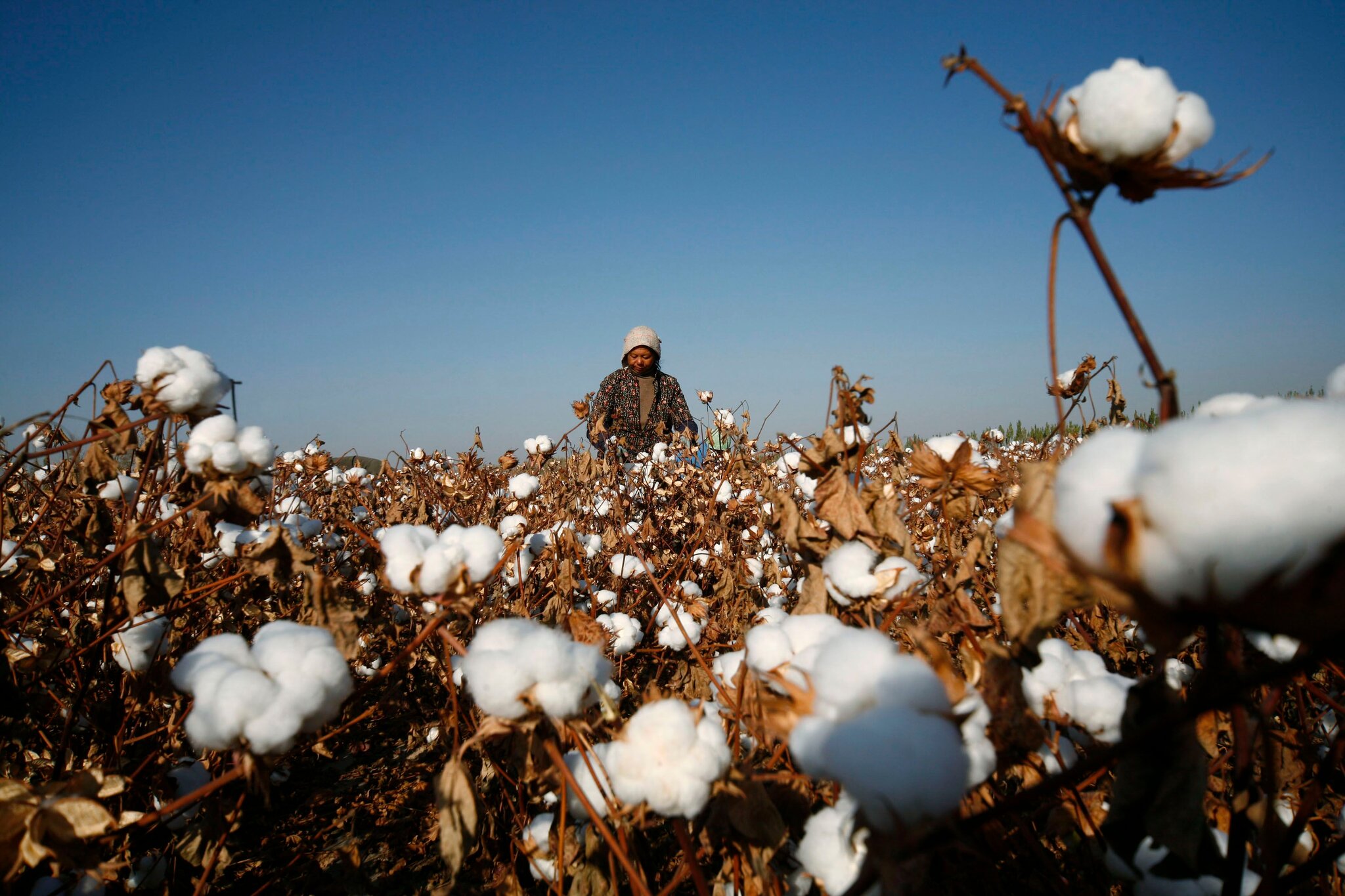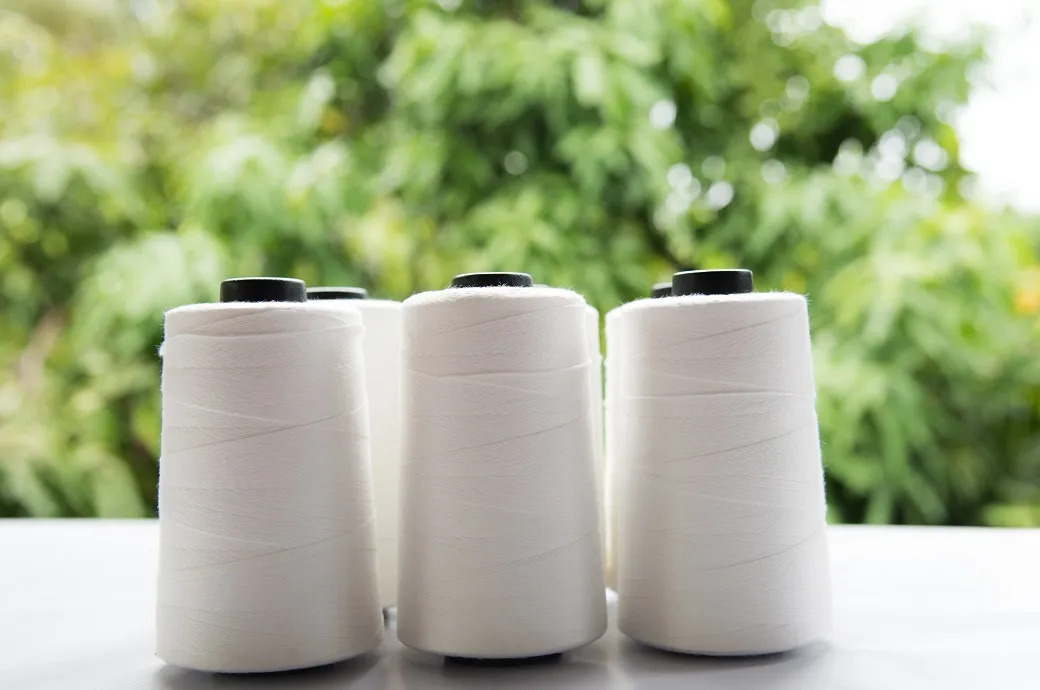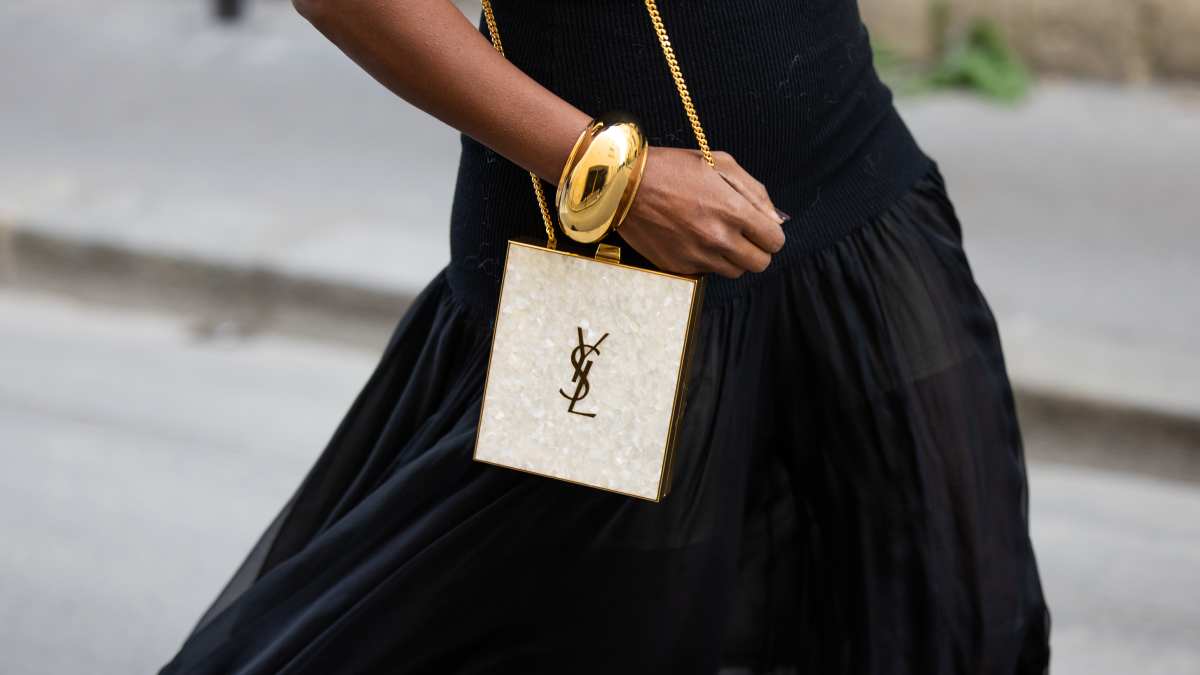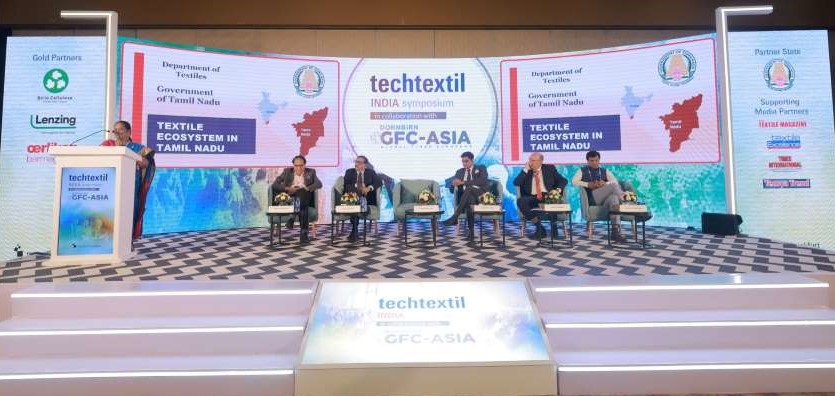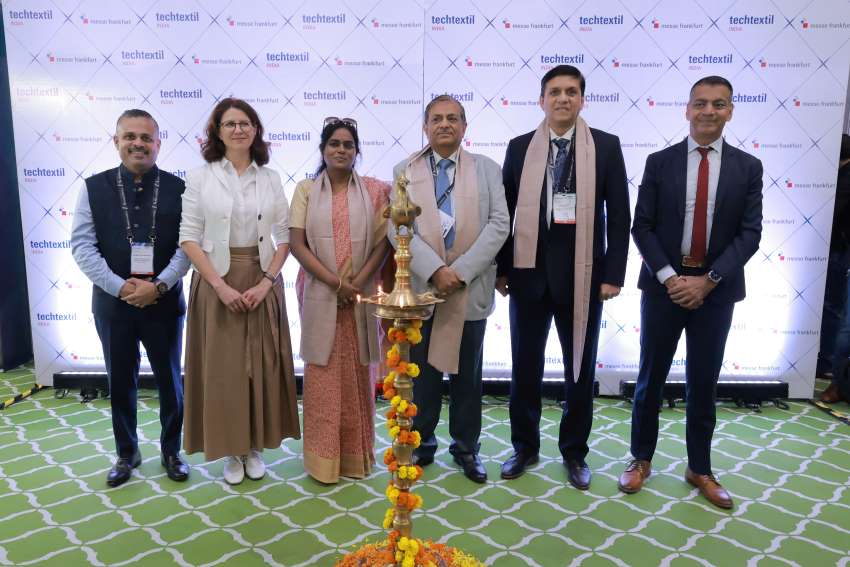FW
The winners of the ITMF International Collaboration Awards 2025 will present their projects at the upcoming ITMF&IAF Conference 2025, to be held from October 24-25, 2025 in Yogyakarta, Indonesia. The event will be co-hosted by Indonesia Textile Industry Association(API).
The objectives of the ITMF International Collaboration Awards including recognizing the progress in the area of international collaboration in the textile industry according to the values of the 17 Sustainable Development Goals (SDGs) of the 2030 Agenda for Sustainable Development.
The four winners of the ITMF International Collaboration Award 2025 include: Bursa Uludag University (Türkiye) for their project titled Unlocking Circular Fashion Design Excellence (ReMODE); Far Eastern New Century Corp(Chinese Taipei) for project titled Biological Recycling of PET/Polyester; Hyosung TNC Corporation (Korea) for project ‘From Waste to Worth – The T2T Collaboration Story,’ and Tangshan Sanyou Group Xingda Chemical Fibre Co (China PR) for their project titled, ‘Next-Generation Textile Materials: Pioneering a New Era of Cross-Industry Collaboration.’
Inditex has opened a new Zara flagship store in Las Vegas. The store was opened within the retail area of the iconic Caesars Palace Hotel, specifically in 'The Forum Shops at Caesars Palace,' which is managed by the Simon Property Group.
Spanning three floors, the store showcases the latest collections from Zara's womenswear and menswear lines. Designed by the chain's in-house architecture department, the outlet features a modern, minimalist aesthetic that sharply contrasts with the hotel's ornate, Roman Empire-inspired neoclassical environment. The store’s main design element is a large central atrium that vertically connects the three levels.
Following the design concept introduced at its Madrid flagship in 2022, the Las Vegas store uses a neutral background to put the collections front and center. It also includes dedicated 'showroom' spaces with distinct interior design for items like footwear, bags, the 'Origin' lines, and the 'Zara Athleticz' men's sportswear.
Emphasizing Zara's signature omnichannel experience, the new store offers customers the ability to check real-time inventory online, utilize assisted self-service checkouts, and benefit from a two-hour collection service for online orders. A dedicated order storage silo with a 500-package capacity supports the popular click-and-collect service. In line with its sustainability efforts, the store features an LED lighting system, uses more sustainable construction materials, and is connected to Inditex's 'Inergy' platform for centralized energy monitoring. It also includes containers for cardboard collection and clothing donations.
This opening strengthens Zara's presence in Nevada, adding to its long-running store at Fashion Show Las Vegas. Nationally, this flagship is part of the ‘30 projects’ that Inditex plans to complete in the United States between 2023 and 2025, confirming the US as its largest market outside of Spain.
The rapidly expanding value and lifestyle fashion brand under the Apparel Group, R&B has launched its Fall/Winter 2025 Collection. This collection defines modern seasonal wear by drawing inspiration from three distinct themes: City, Nature, and Classics, offering a blend of versatility, comfort, and current trends for the Middle East and India.
The collection is designed to help everyone express their unique style. For women, the City range delivers bold prints and street-chic silhouettes. The range Nature offers relaxed elegance through calm neutrals while Classics provides refinement with polished tweed jackets and timeless outerwear pieces.
For men, the collection mirrors this energy with varsity-inspired City looks, rugged puffers for the Nature theme, and sophisticated Classics featuring clean knitwear and sleek new PU jackets.
The youth collection for kids offers cool statement sweatshirts in the City line, playful color combinations in Nature, and a modern monochrome twist in Classics.
Refreshing its footwear and accessories range, the brand showcases contemporary designs with elevated details to perfectly complement all the new outfits.
Launched in Oman in 2012, R&B has grown rapidly to operate over 165 stores across eight countries, consistently opening a new location monthly. The brand offers quality, affordable fashion and is backed by its in-house design team, ensuring the collections are always on-trend.
The Fall/Winter 2025 Collection is now available at all R&B stores throughout the Gulf Cooperation Council (GCC) countries and online at randbfashion.com.

In a country known for its deep-rooted retail traditions, discerning shoppers, and a growing emphasis on sustainability, the rise of Shein, China’s ultra-fast fashion powerhouse stands out as one of the most striking retail stories of recent years. Once dismissed as a niche online brand catering to teenage trend-chasers, Shein has now muscled its way into Germany’s e-commerce elite, ranking as the seventh-largest online retailer according to the latest EHI Retail Institute and ECDB data.
The figures reveal a story of speed, scale, and disruption. In 2024, Shein’s German operations generated €1.12 billion in net e-commerce sales, 18 per cent year-on-year growth. It now outranks domestic stalwarts like About You and Shop Apotheke, brands once considered the new generation of German commerce success stories. While Amazon and Otto remain far ahead, with €15 billion and €4.4 billion in sales respectively, Shein’s growth is unmatched, outpacing nearly all of its top-10 peers.
The rise of a challenger
In a German fashion market valued at roughly €65 billion, Shein’s market share of 1.7 per cent may seem modest. Yet, its speed of ascent is unprecedented. It took Zalando, Germany’s homegrown digital fashion titan, more than 15 years to achieve a 4 per cent share. Shein has reached nearly half that in less than a decade and with none of the traditional retail trappings: no warehouses in Germany, no domestic logistics networks, and until recently, no physical presence.
“Shein’s rise represents not just a competitive threat it’s a redefinition of what agility in fashion retail looks like,” says Verena Jung, a retail analyst at EHI. “It’s the embodiment of algorithmic retail where data, not design, dictates what gets produced.” The company’s playbook is built around speed and sensitivity. Rather than producing vast seasonal collections months in advance, Shein operates a ‘test-and-repeat’ model. It launches micro-collections in small batches, gauges customer reactions in real time, and scales only the hits often within days. This responsiveness to trend signals scraped from social media, influencer posts, and search data gives Shein a clear understanding of what its Gen Z shoppers want next.
The power of a generation
At the core of Shein’s success lies a consumer base that is young, digital, and restless. German Gen Z and younger Millennials especially women aged 16 to 30 form the backbone of its market. For them, fashion is less about ownership and more about momentary expression.
A 2025 survey cited by EHI/ECDB found that over 60 per cent of Shein’s German customers discover products through TikTok hauls or Instagram reels. Shein has mastered the art of social commerce, turning viral trends into product catalogs almost overnight. “Shein doesn’t sell clothes it sells participation in a global trend loop,” explains Lisa Becker, a fashion marketing lecturer at Berlin’s Hochschule für Technik und Wirtschaft. “When a microtrend hits, Shein already has it in stock. That’s not luck; that’s data science.”
The company’s pricing strategy, often undercutting competitors by 30-50 per cent adds another layer of appeal. Yet, this affordability comes with volatility. While the average German consumer buys about 1.3 Shein items per year, a smaller, hyperactive segment driven by social validation makes frequent, low-value purchases. This ‘fickle’ core is both a source of Shein’s growth and its biggest vulnerability; loyalty, after all, is fleeting when fashion itself has a 24-hour shelf life.
The sustainability paradox
For a country that prides itself on environmental consciousness, Shein’s runaway success poses a paradox. Germany’s sustainability rhetoric is among the strongest in Europe, yet consumption patterns tell another story.
According to Destatis data, textile waste from private households hit 175,000 tonnes in 2023, while per capita waste rose to around 2 kg annually. More strikingly, exports of old clothes and second-hand textiles reached 462,500 tonnes in 2022, a 55 per cent increase over the past decade.
New EU waste directives coming into force in 2025 will require separate collection of textiles to improve recycling rates. But experts warn that regulation may not address the root problem: overproduction and overconsumption.
Meanwhile, surveys by Mintel and GfK highlight the ‘say-do gap’ in consumer behavior. While nearly 70 per cent of German consumers say sustainability influences their clothing purchases, fewer than 35 per cent actually buy eco-friendly fashion. Cost remains the defining barrier a gap Shein exploits masterfully with its ‘luxury look for less’ promise.
“Shein is the perfect brand for a generation that wants to look conscious but shop cheap,” says Andreas Müller, a sustainability consultant in Hamburg. “It monetizes the contradiction between values and budgets.”
A model under pressure
Shein’s meteoric rise hasn’t come without scrutiny. Allegations of labor exploitation, poor working conditions, and intellectual property violations have trailed the company across markets. In response, Shein has rolled out a supplier code of conduct, pledged to improve transparency, and even launched resale platforms in some European markets to tap into the circular fashion movement.
Yet critics remain skeptical. “Shein’s circularity initiatives are PR patches on a fundamentally linear business model,” argues Johanna Klein, a researcher on sustainable supply chains at the University of Münster. “As long as its profits depend on volume and velocity, sustainability will remain a contradiction in terms.”
Adding to the challenge is a shifting regulatory environment. The EU’s new Ecodesign for Sustainable Products Regulation (ESPR) and forthcoming due diligence laws will force companies to disclose supply chain data and meet environmental standards. For Shein, this could mean either a costly overhaul or a business model towards more localized, compliant production models.
Between disruption and reckoning
For now, Shein’s foothold in Germany looks secure. Its formula data-driven trendspotting, hyper-affordability, and influencer-led marketing has unlocked a level of consumer engagement traditional retailers can only envy. But its long-term survival in one of Europe’s most regulation-heavy markets will depend on its ability to evolve beyond the fast-fashion playbook.
Germany may well be Shein’s toughest test yet: a market where price meets conscience, and where the definition of fashion success is being rewritten in real time. As Shein continues its expansion across Europe, one thing is certain the battle for the wardrobe is no longer between brands, but between values.
In a landmark move poised to reshape the environmental future of fashion, Birla Cellulose launched India’s first next-generation cellulose fiber known as Liva Reviva M. This breakthrough product is made with up to 50 per cent mechanically recycled post-consumer textile waste. The launch marks a bold declaration that fashion must shift away from its traditional linear model.
The world currently generates 92 million metric tons of textile waste annually, a figure the United Nations Environment Program projects will grow by 45 per cent in the next five years. Liva Reviva M arrives as a tangible, scalable, and certified answer to one of the fashion industry’s most critical crises.
Liva Reviva M isn't just another sustainable fiber; it’s the future of fashion itself. We’re not talking about incremental change. We’re talking about rewiring the very DNA of how fashion is made, worn, and reborn, says Manmohan Singh, Chief Marketing Officer, Birla Cellulose.
Liva Reviva M achieves true circularity by blending premium man-made cellulosic fibers with mechanically recycled textile waste. The fiber offers core benefits including 100 per cent plant-origin with major cellulosic content, skin-friendly and breathable, soft to the touch with a fluid drape and certified by both GRS (Global Recycled Standard) and FSC (Forest Stewardship Council).
This fiber is already proving its versatility in real-world use, ranging from premium denims to knitted wear, with leading fashion brands eager to incorporate it into their upcoming collections.
Liva Reviva M provides a rare asset: a commercially viable and technically proven solution. It demonstrates how post-consumer fashion waste - once destined for landfills and incinerators—can now be reborn into high-performance garments, effectively redefining waste as a valuable resource.
With this launch, Birla Cellulose, a global leader in cellulosic fibers and part of the Aditya Birla Group, solidifies its claim as an environment-first pioneer.
UK's leading responsible sourcing trade show, Source Fashion has partnered Redress as their catwalk partner for Olympia London from January 13–15, 2026. This collaboration aims to highlight pioneering designers who are reshaping the fashion industry through circular and sustainable design.
Based in Hong Kong, Redress is an Asia-focused environmental NGO dedicated to speeding up the transition to a circular fashion industry. It achieves this by educating and empowering designers and consumers to reduce the negative environmental impact of clothing.
At the core of their work is the Redress Design Award, the world’s top sustainable fashion design competition. The award has created a global network of over 300 emerging designers who specialize in circular and waste-reducing practices. This shared focus on innovation, education, and real-world change makes Redress an ideal partner for Source Fashion.
For Source Fashion's January 2026 event, Redress will select two to three Redress Design Award alumni to headline the catwalk. Their curated show will emphasize innovation, circular design thinking, and a firm commitment to environmental impact reduction.
The dynamic catwalk will run three times a day. It will offer a visual narrative demonstrating how responsible design and creative excellence can merge to redefine fashion's future.
Suzanne Ellingham, Director, Source Fashion, says, this partnership marks an exciting new chapter for the show's catwalk. Redress has been instrumental in nurturing some of the most forward-thinking designers working in sustainability today. Their alumni prove that creativity and responsibility are not opposing forces - they’re the foundation of fashion’s future, she notes.
Christina Dean, Founder of Redress, states, this partnership with Source Fashion creates the perfect stage to show that sustainable fashion isn’t just a passing trend, it’s the future. It proves, circular design can be innovative, beautiful, and commercially viable, she adds.
The Source Fashion Catwalk will feature responsibly produced collections, trend-led designs, and cutting-edge innovation three times daily. Each show will tell a compelling story of sustainability in action, inspiring buyers with practical ideas they can implement directly after the show.
Representing a broad range of industries, 26 European business associations, have issued a joint declaration expressing their full support for the rapid ratification of the EU-Mercosur Partnership Agreement.
The members of these associations account for a significant portion of the total trade between the EU and the Mercosur region, which reached over €153 billion in goods and services in 2024. They also represent much of the mutual investment, which stood at approximately €380 billion in 2023.
The business leaders emphasized, in an unprecedented time when the rules-based global order is under critical threat, this free trade agreement serves as a vital tool for the EU’s diversification strategy. They consider it a critical component for safeguarding the EU’s long-term competitiveness.
According to calculations from the EU’s Directorate-General for Trade (DG Trade), the agreement is projected to generate substantial economic benefits by 2040. It is expected to add €77.6 billion to the EU’s GDP. It would also add €9.4 billion to Mercosur’s GDP.
Additionally, the agreement is also forecast to boost EU exports to Mercosur by 39 per cent Mercosur exports to the EU by 17 per cent.
The EU-Mercosur Agreement is expected to deliver increased market access and better access to resources while protecting key European domestic sectors, diversifying secure supply chains, and encouraging investment for both regions.
Furthermore, the pact will deepen cooperation on sustainable development, specifically in areas like combating climate change, conserving biodiversity, and advancing labor and social rights.
This year’s edition of the Global Sourcing Expo highlights the transformative potential of Artificial Intelligence (AI).
The Expo’s Global Sourcing Seminar Program will feature a session titled ‘Growth, eCommerce and AI in Fashion,’ scheduled for November 18. This discussion is designed to bring together industry leaders to explore how technology and creativity are combining to drive smarter, more sustainable business growth.
The session will be led by Elizabeth Formosa, Founder, Fashion Equipped, who will be joined by Kelly Slessor, Founder, The Ecommerce Tribe & Tribe Gen AI and Christina Exie, Co-Founder, Stacked Studio. The experts plan to share practical strategies and real-world examples that highlight the fashion industry’s rapid digital evolution.
Formosa emphasizes, AI is changing how the entire industry operates, from design and sourcing to marketing and customer experience. Brands are no longer asking if they should use AI, but how to use it effectively and responsibly. She states, AI helps brands understand customers on a much deeper level. Further, it allows for personalized experiences, demand prediction, and smarter, faster decisions.
AI is also enabling the industry to work smarter and make more responsible choices, notes Fermosa. It helps reduce waste through smarter forecasting. Further , it improves inventory management and product development and by predicting demand more accurately, the technology can significantly minimize overproduction, she adds.
The Global Sourcing Seminar Program aims to offer expert-led education sessions that translate ideas into action. Formosa’s session promises to deliver practical, actionable takeaways across sourcing, brand development, digital strategy, and AI adoption, empowering attendees to immediately grow and strengthen their businesses.
Formerly known as simply ‘Better Cotton,’ The Better Cotton Initiative (BCI) has launched a new product label to enhance traceability and transparency for consumers.
This new label enables brands to claim that their products contain physical BCI Cotton that has been traced back to its country of origin. This is a shift from the previous system, which primarily used a ‘Mass Balance’ model where funds supported Better Cotton farming, but the physical fiber was not guaranteed in the final product. The claims made using the new label are verified by an independent third-party certification body, reinforcing accountability.
To use the label, products must contain a minimum of 30 per cent Physical BCI Cotton. The remaining content must be other materials (like synthetic fibers) but cannot be uncertified cotton.
The label will communicate two key pieces of information including the name of the certified commodity; BCI Cotton and the percentage of BCI Cotton contained in the product.
The new label is a direct response to the growing global demand from consumers and regulators for transparency and accountability in sustainable supply chains. It helps to substantiate sustainability claims and prevent ‘greenwashing.’
In conjunction with the label launch, the organization has clarified its brand identity. It is now formally referred to by its full name, the Better Cotton Initiative (BCI). The cotton sourced through the program will now officially be referred to as BCI Cotton.
The label and rebrand were announced to coincide with World Cotton Day. Products featuring the new label are expected to appear in retail outlets gradually over the coming months.
Kontoor Brands, Inc plans to release its financial results for Q3, FY25 on November 3, 2025. The company’s management will host a conference call at approximately 8:30 a.m discuss the results.
The conference call will be broadcast live and available at kontoorbrands.com/investors. An archived version will be accessible at the same website location.
Owner of three of the world’s most iconic brands like Wrangler, Lee and Helly Hansen, Kontoor Brands, In is a purpose-led organization focused on using its global platform, strategic sourcing model, and best-in-class supply chain to grow its brands and deliver long-term value for its stakeholders.

